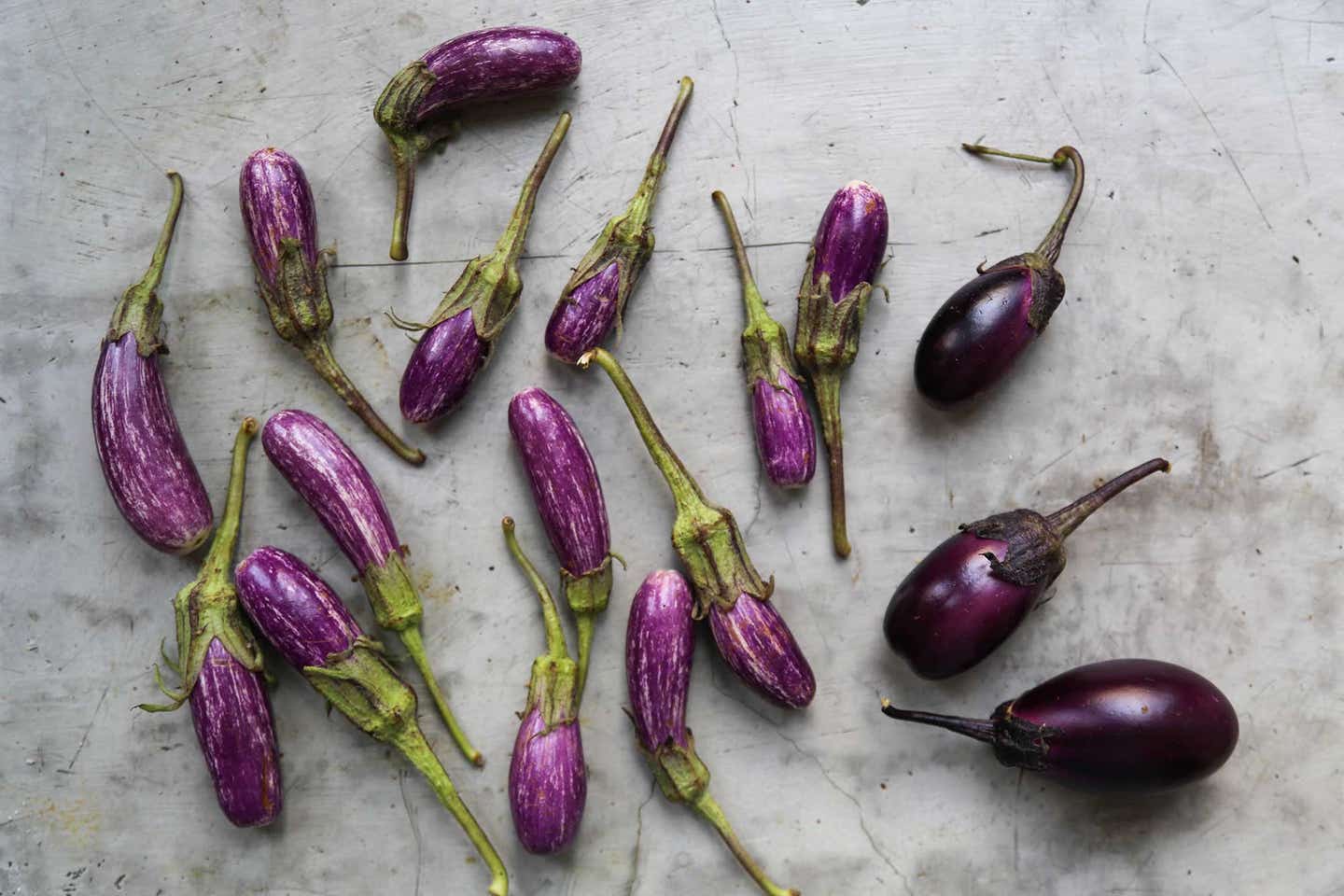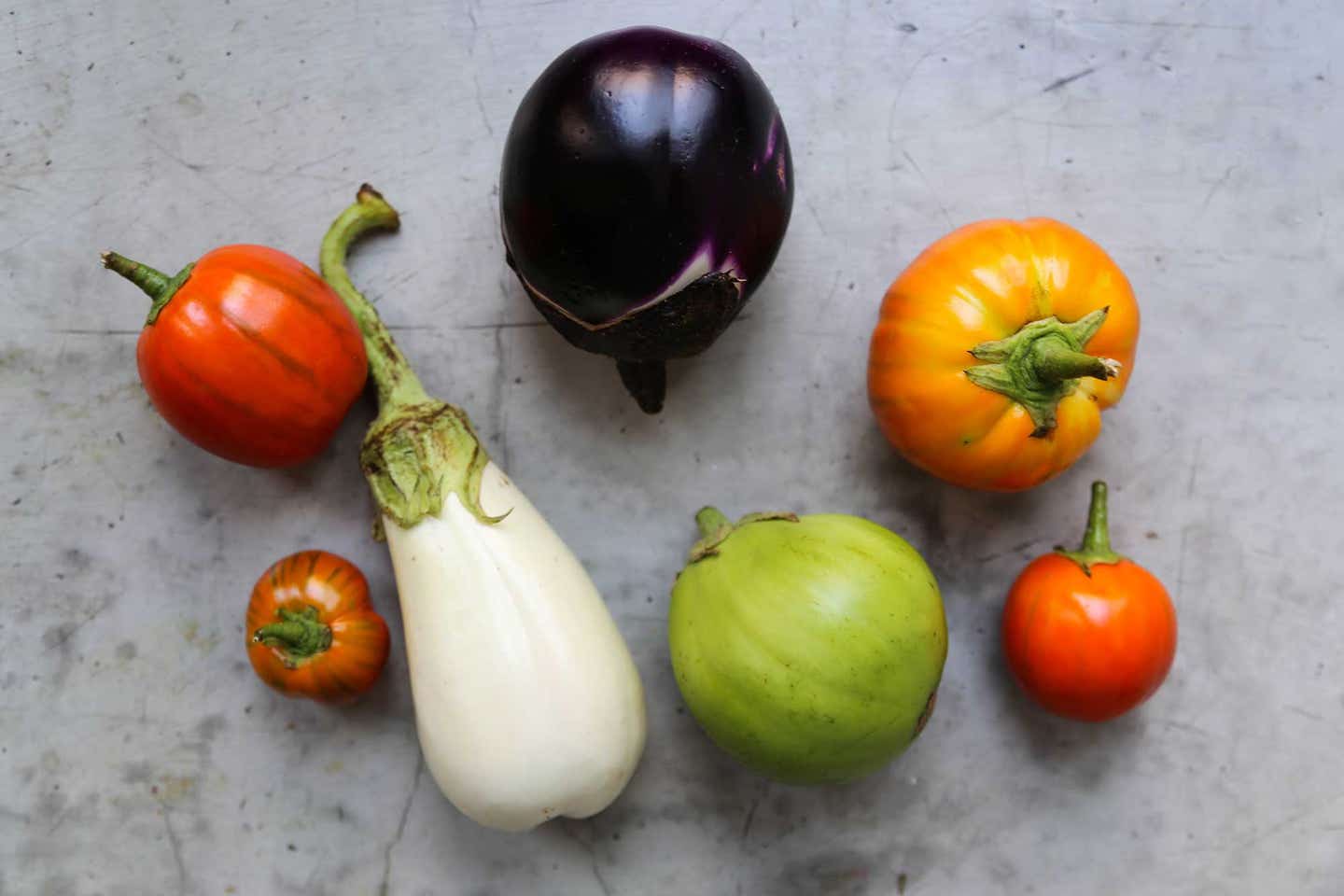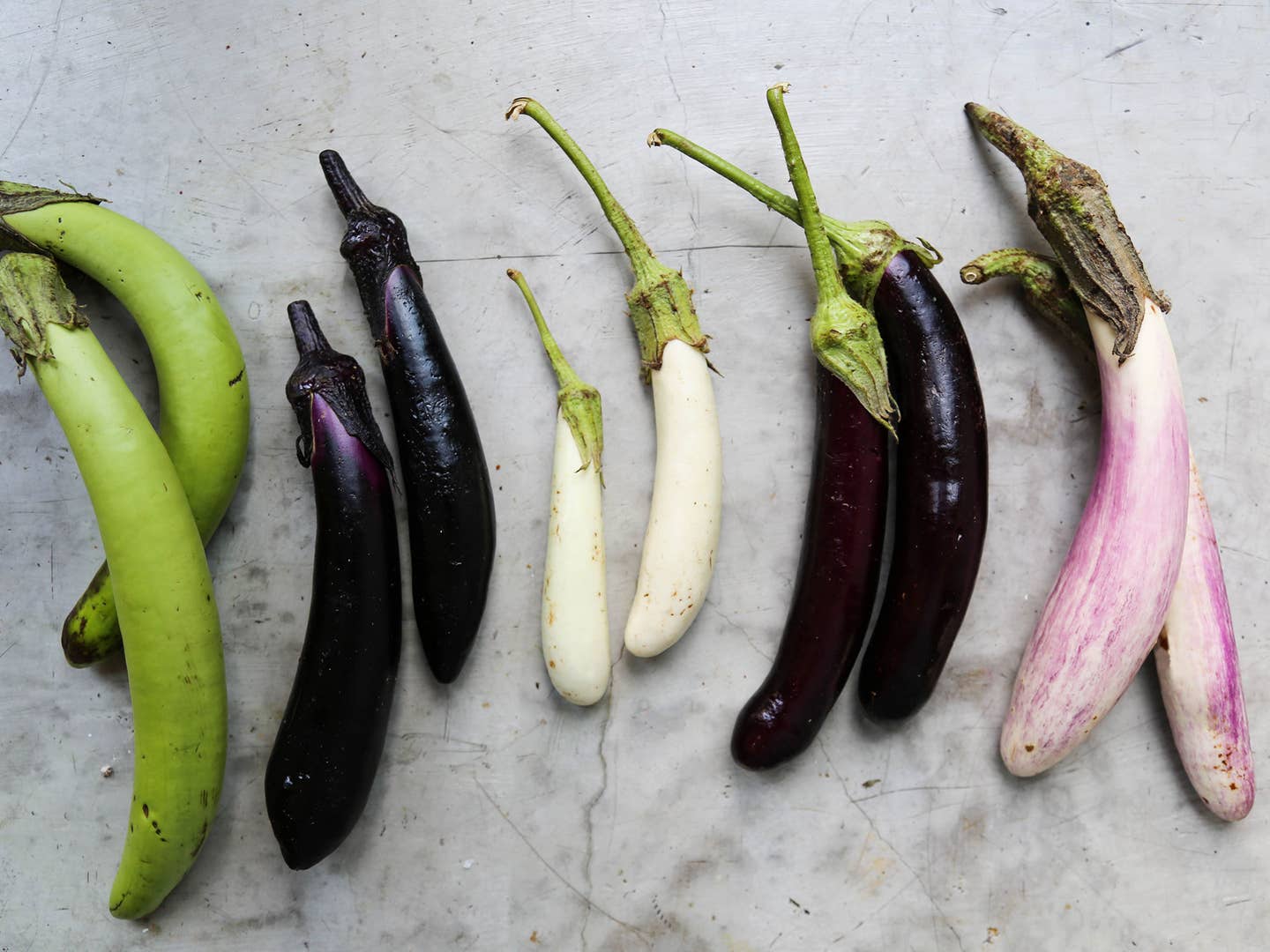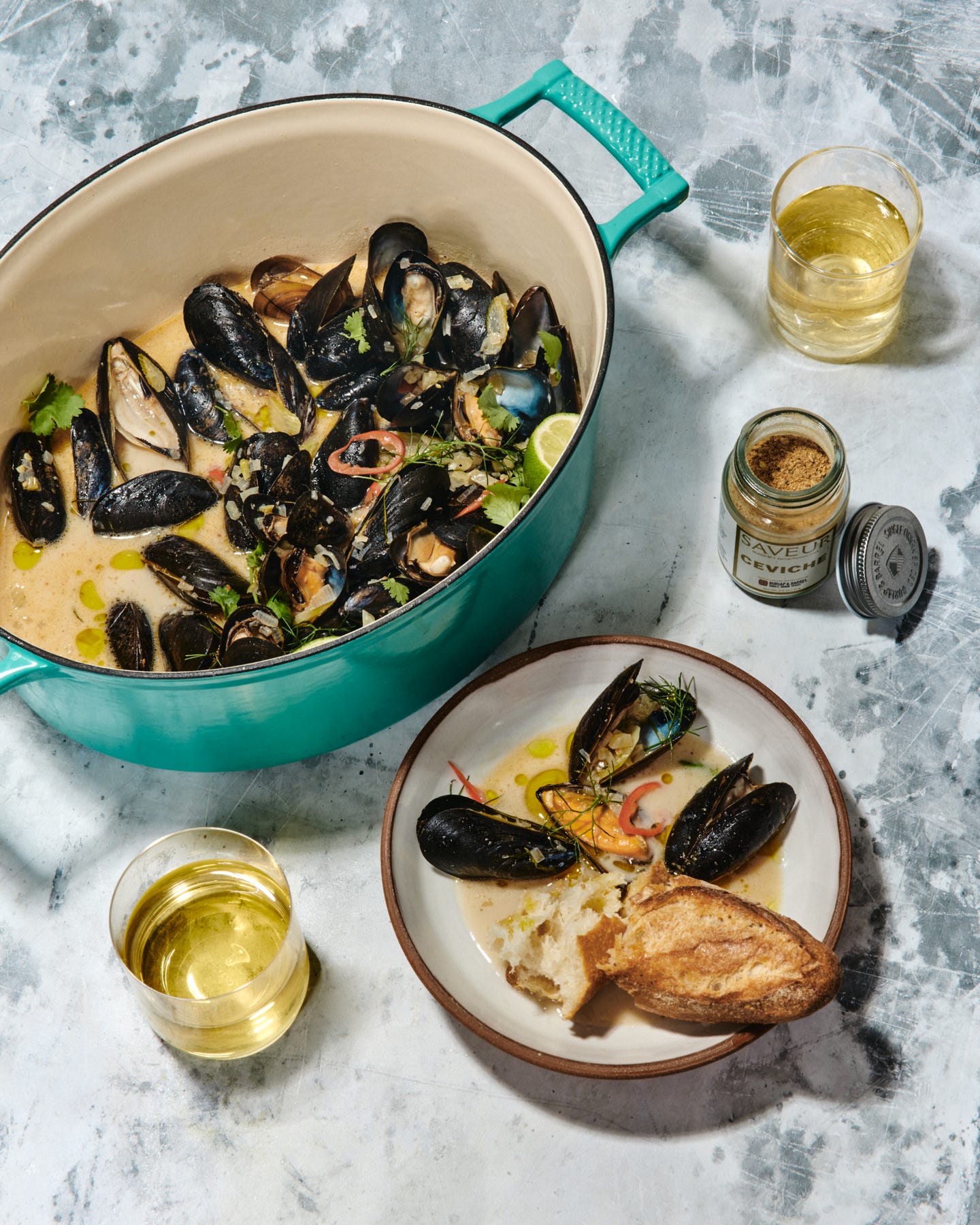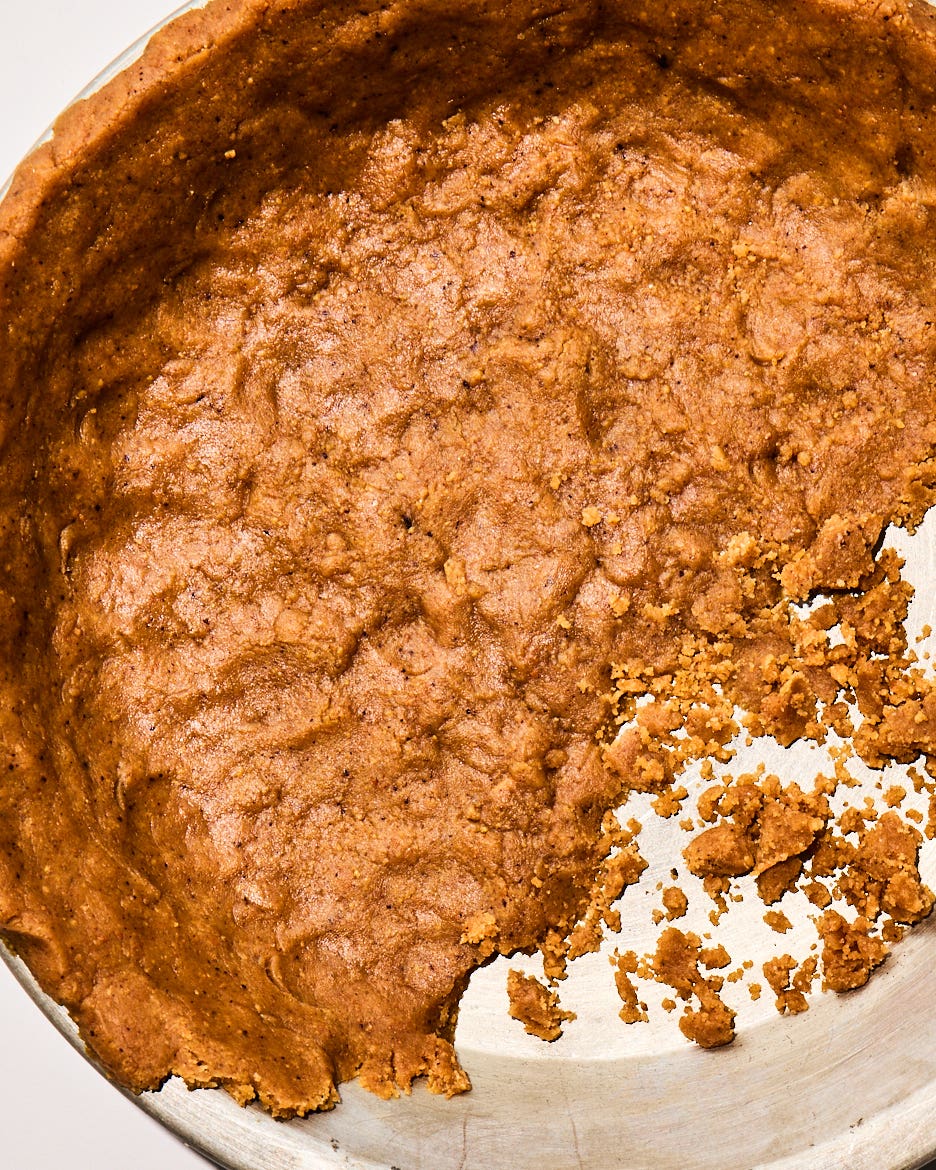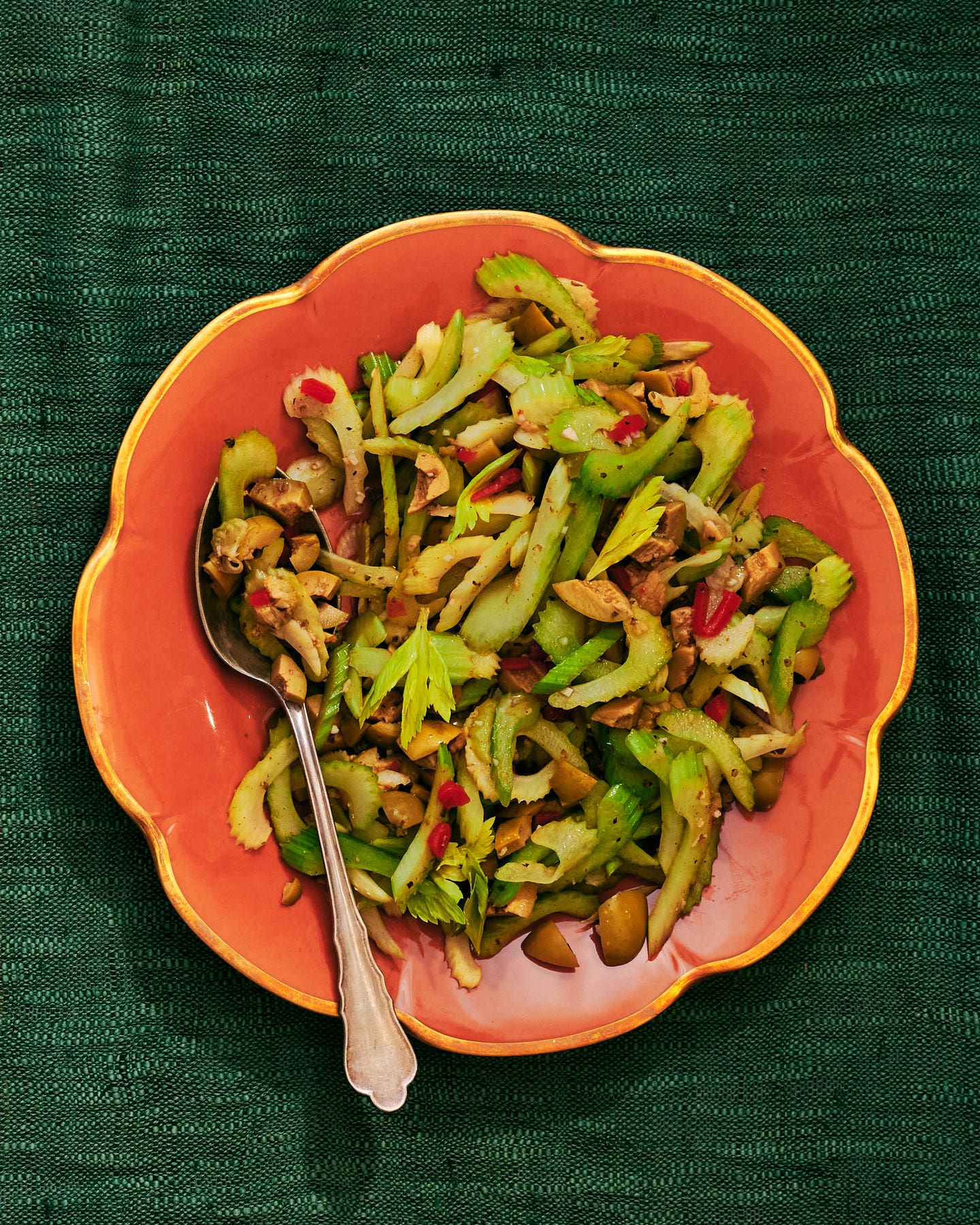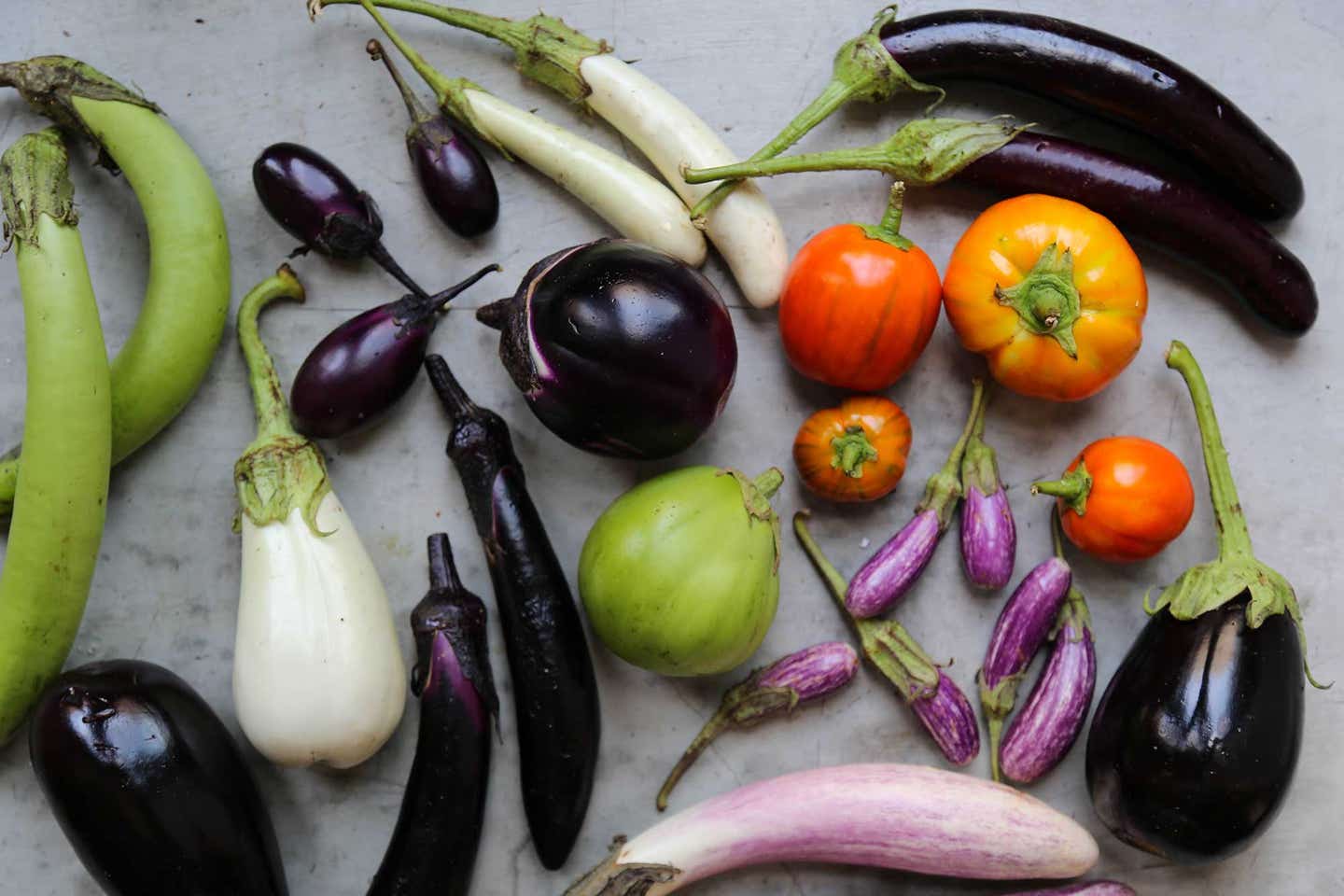
Eggplants Have a Weird, Dysfunctional Family. Come Meet Them.
Not all aubergines are plushy and purple; here’s a beginner’s guide to tasting the eggplant rainbow
What do you see of when you think of an eggplant? The one in the emoji, right? Purple and hefty and cylindrical with a gentle curve like a baby taking a nap.
But if you head to your farmers’ market right now, you’ll see just how diverse and overwhelmingly large the eggplant family is. These berries—yes, eggplants have seeds, so are technically fruits—have such a convoluted family tree that it’s hard to classify them into discrete groups. The rainbow of eggplant in American markets is vast, but still nothing compared to what you’ll find across the world.
While that rainbow tastes more or less the same, eggplants' textures vary widely. Here's a guide to get you better acquainted with the eggplant family—and how best to eat them.
Aubergine Essentials
Small globe-shaped eggplants tend to be more dense; the larger or more elongated they are, the more their flesh gives under pressure.
Where Did Eggplants Come From?
Contrary to Western belief, eggplants aren’t Italian. They’re actually native to east India, west China, and the swath of land (such as Myanmar) in between. They were introduced to Japan in the 8th century, then to Europe in the 13th. After then, distinct regional forms were developed beyond the mostly crunchy, white-skinned, and egg-shaped plants that helped eggplants earn their name.
When eggplants arrived in America in the 16th century, they looked nothing like the purple, pear-shaped types you see in grocery stores year-round. A description in a book from 1597 explains the name: the plant was described as being “of the bigness of a swans egge [sic], and sometimes much greater, of a white color, sometimes yellow, sometimes browne [sic].”
The first eggplants that came to the American colonies looked like giant eggs, and were grown as decorative objects (think those fall gourds!) rather than food. The familiar purple ones came to the states much later, and we can thank immigrants from South Asia, East Asia, and the Middle East who brought seeds from their homelands for the wide range of eggplants now available at local markets.
There’s little order to the eggplant family, but here are some broad classifications to keep in mind.
Asian Eggplant Varieties
The Asian varieties are long and skinny. They’re mild, tender, low in seeds, and quick-cooking whether small or fully grown. The lighter fruits—white, light purple, and ones with lavender streaks—are usually called Chinese eggplant and are especially delicate. The super dark purple fruits are usually called Japanese eggplants. They’re a bit firmer, sweet, and maintain their color better than other eggplants.
Green Eggplants
Green eggplants are generally sweeter and less bitter than other colors. They come in all shapes and sizes, but the small spherical ones common in Thai cooking are almost as crunchy as apples.
White Eggplants
White-skinned eggplants tend to have thicker skins, so you may want to peel them for a more tender texture. They tend to hold their shape when cooked more than the big purple varieties.
Red and Orange Eggplants
Small red and orange eggplants look a lot like tomatoes, and are generally seedy and can be bitter (but not always). Honestly, shopping for these is a game of roulette; even the farmers who grow these varieties can’t say if the eggplants will be bitter until they’re cooked.
How to Pick a Perfect Eggplant
Long, slender eggplants tend to turn especially silky with long cooking.
Buying a Good Eggplant
When shopping for eggplants, select heavy fruit. You want smooth, taut, and shiny skins. The calyx (the green cap at the top) should be firmly intact. If you see brown spots, keep clear: the flesh around them will likely be bitter.
Eggplants don’t store well.. They don’t like cold, it causes browning and textural breakdown, so they fare poorly in the fridge. So buy the nicest looking ones you can, then cook them ASAP. I wouldn’t keep them in the fridge for more than a day.
VIDEO: How to Grill Eggplant
Keep Reading
Continue to Next Story
